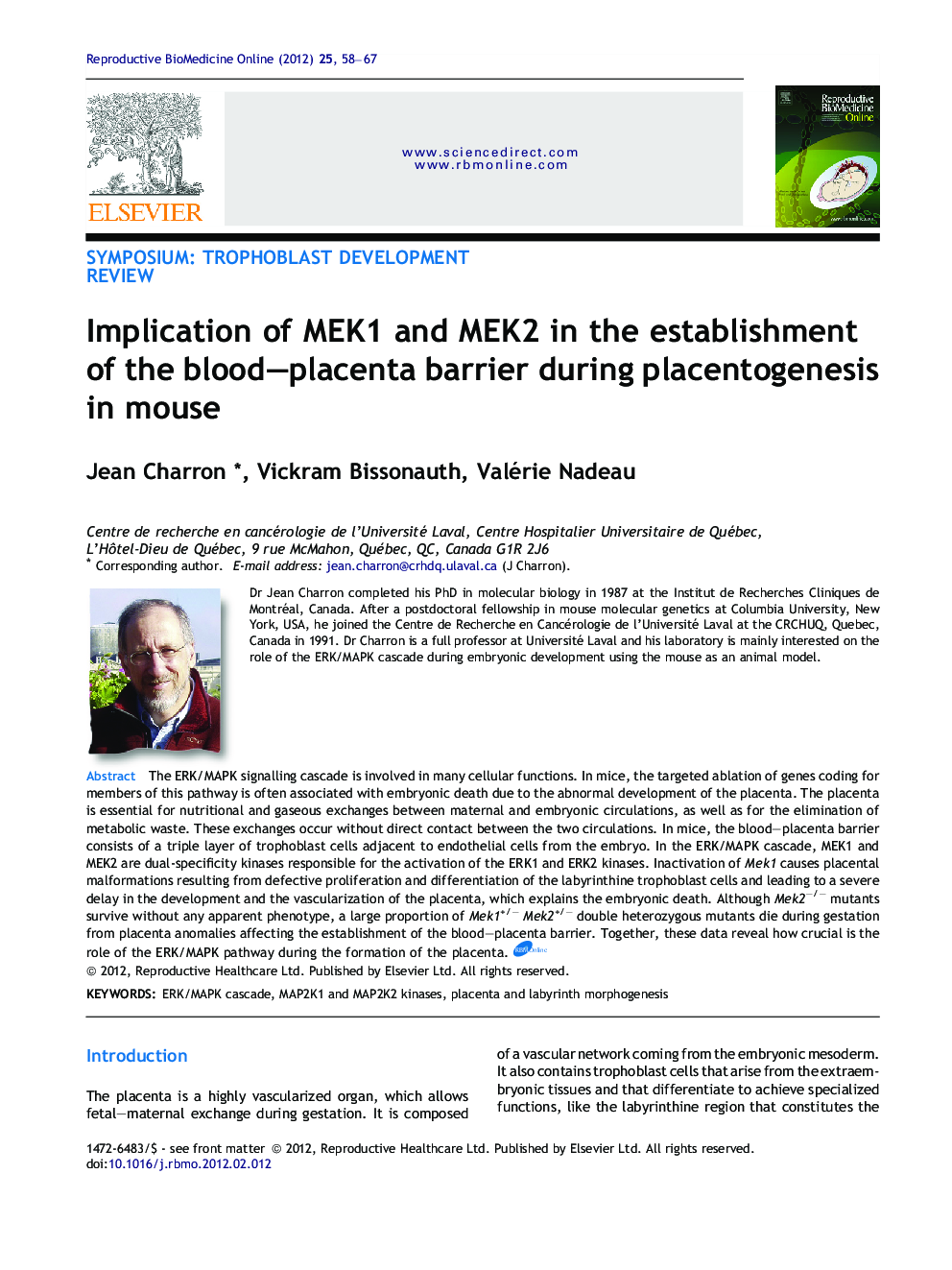| Article ID | Journal | Published Year | Pages | File Type |
|---|---|---|---|---|
| 3970485 | Reproductive BioMedicine Online | 2012 | 10 Pages |
Abstract
In normal cells, various cellular processes are tightly controlled via a cascade of protein kinases, which transduce various signals from the cell surface to the nucleus to activate programmes of cell growth and differentiation. This network of sequential protein kinases referred to as the mitogen-activated protein kinase (MAPK) signalling cascade has been conserved during evolution. Our studies on the role of Mek1 and Mek2, components of this cascade, during mouse development have shown that both Mek1 and Mek2 genes contribute to normal morphogenesis and vascularization of the placenta. Mek1 mutant mice die during gestation of abnormal development of the labyrinthine region of the placenta. In contrast, Mek2 mutant mice are viable without any obvious anomaly. However, a majority of double heterozygous Mek1+/âMek2+/â embryos die during late gestation from placental defects. Thus, the lack of one allele of each Mek gene is deleterious to embryo survival suggesting a potential contribution of Mek2 to placenta development. Despite similarities in their biochemical properties, MEK1 and MEK2 appear to have specific biological functions. Our long-term objective is to unravel the molecular mechanisms responsible for the specificity of action of MEK1 and MEK2 as well as to identify in which cellular processes the ERK/MAPK cascade is implicated. Characterization of the mechanisms involved in signal transduction is essential for our comprehension of the role of the ERK/MAPK signalling cascade in placenta diseases.
Related Topics
Health Sciences
Medicine and Dentistry
Obstetrics, Gynecology and Women's Health
Authors
Jean Charron, Vickram Bissonauth, Valérie Nadeau,
